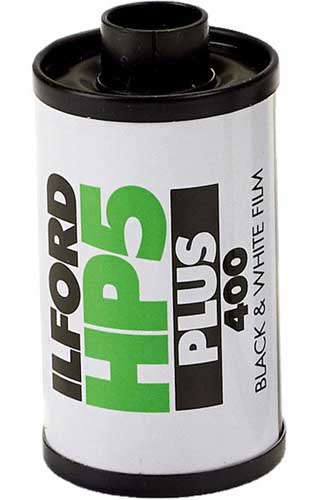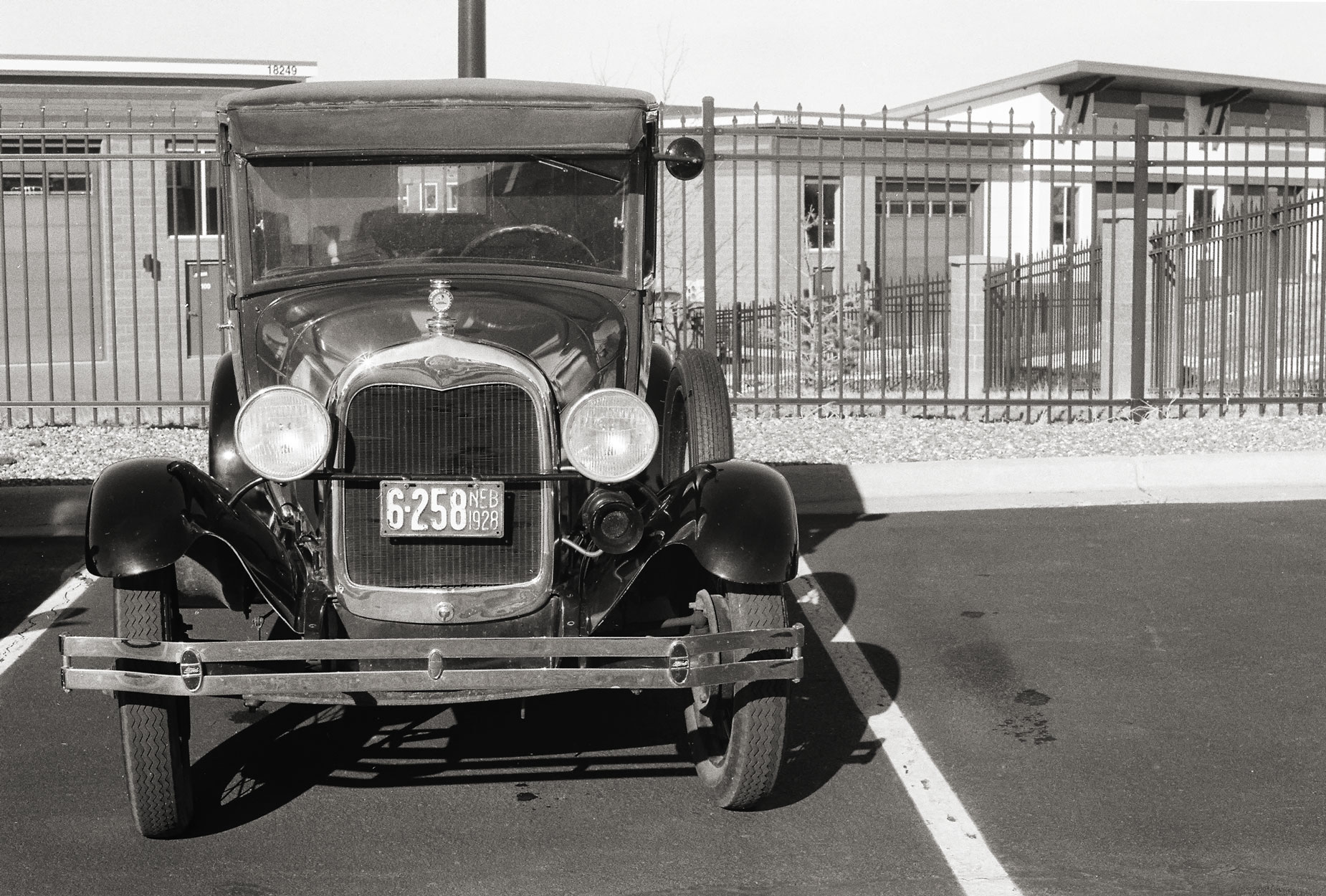Previously on #filmfriday: On February 11, the sun was shining, snow clouds parted and temperatures were above 10 degrees F and cars came out for the monthly Vehicle Vault’s Espresso & Exhaust event. I dusted off my 40-year old Canon AE-1, loaded it with Ilford HP5 Plus and headed to the show. Afterwards, I drove to Mike’s Camera in Lone Tree to drop off the film for processing and scanning. The guy behind the counter told me the film would be ready to pick up on March 10th! On Sunday, March 5, I received an email from Mike’s saying “Your order will be available for download via this link for one week.” I downloaded the zip file, unzipped it and took a peek at the scans. Here’s what happened next…
Today’s Post by Joe Farace
When performing in Central Park in 1991, Paul Simon changed the lyrics of his song Kodachrome to “everything looked better in black & white,” proving that you can, in fact, change your tune.
 Ilford Photo’s HP emulsion is a cubic-grain black-and-white film with a long history. It was originally formulated in 1931 as Hypersensitive Panchromatic plates and since then it’s progressed through a number of different versions, HP5 PLUS being the latest one. Ilford says HP5 PLUS is a medium contrast, all-purpose black & white film that’s ideal for action, documentary and available light photography. It’s supposed to have a wide exposure latitude and should be useful when shot under varying lighting conditions.
Ilford Photo’s HP emulsion is a cubic-grain black-and-white film with a long history. It was originally formulated in 1931 as Hypersensitive Panchromatic plates and since then it’s progressed through a number of different versions, HP5 PLUS being the latest one. Ilford says HP5 PLUS is a medium contrast, all-purpose black & white film that’s ideal for action, documentary and available light photography. It’s supposed to have a wide exposure latitude and should be useful when shot under varying lighting conditions.
About that grain: Film grain is composed of silver particles that measure between 15 to 25 microns. (A micron is one-millionth of a meter or one-thousandth of a millimeter.) I couldn’t find a hard-and-fast definition of cubic grain but most people define it as the kind of grain you’ll encounter in traditional film stock like Kodak’s Tri-X. In fact, HP5 PLUS is often compared to Tri-X. Because of its randomized structure pattern, some photographers seem to prefer its “natural look” when comparing to films that use tabular grain like Kodak T-MAX or Ilford’s Delta. I’ve always liked T-MAX and dearly love Ilford Delta, so I guess I’m not “some photographers.”
During its long life, the film went through two speed changes with only one actual change to the emulsion. In 1960 the 200 ISO version was relabeled as 400 ISO/ASA with no apparent change to the film. It seems that the 200 ISO speed rating included a safety margin but with improvements in light meters this was deemed unnecessary and the rating was raised to 400 ISO.

A Look at The Film…
The roll of JCH Street Pan black and white film that Mike’s Camera processed for me was overdeveloped and scratched. After waiting three weeks, the roll of HP5 PLUS appears properly developed but the initial scans I received were dirty. Three days after the aforementioned email, I was sent—unsolicited—another set of scans. They were somewhat better but hardly clean and not up the Mike’s previous standards. See my video on this subject here. The featured image above had dust spotting that was applied using Photoshop’s Healing Brush tool, then it was toned with Photokit’s Platinum tone options before applying Color Efex’s Glamour Glow filter to hide any dust spots I missed.
To me, HP5 PLUS seems slightly grainier than Kodak’s Tri-X but not excessively so. It’s also seems less contrasty and more sensitive to exposure—less latitude. It might actually look better at ISO 200, something I want to test. When evaluating grain and exposure, there are many variables starting with in-camera exposure. Shooting with a 40-year old camera provides the biggest variable in exposure but the only way you can be certain is having consistent processing and that’s accomplished by doing it yourself. I’m not ready for that yet but I plan on shooting another roll of HP5 PLUS in the studio (yesterday) and send the film to The Darkroom. It will cost more and will be delivered n far less time. UPDATE: Because of the shoots unexpectedly tight schedule I was also shooting video—look for a video on YouTube soon—my brain wasn’t ready for working in three formats at the same time.
I’m going to give Mike’s Camera one more try and have them process and scan some color negative film, which is done in-house at the Lone Tree store. If it’s as good as it was in the past, I’ll stick with them for processing and scanning my color negative film—only. You see the deal is not just the money that was spent on the film and processing, which is also a consideration, but the time spent shooting the film in the first place.
Utramax Update: in March 2022, I ordered a three-pack of Kodak UltraMax from B&H Photo. It was out of stock but the company said they would update me on it’s status and they have. On Sunday March 5 they send me the following email:
“We advised you that when Kodak GC/UltraMax 400 Color Negative Film (35mm Roll Film, 24 Exposures, 3-Pack) becomes available we would send you interim updates. We regret the item remains unavailable. We will continue to update you on the status of this item via email every 2 weeks until it becomes available to you.”